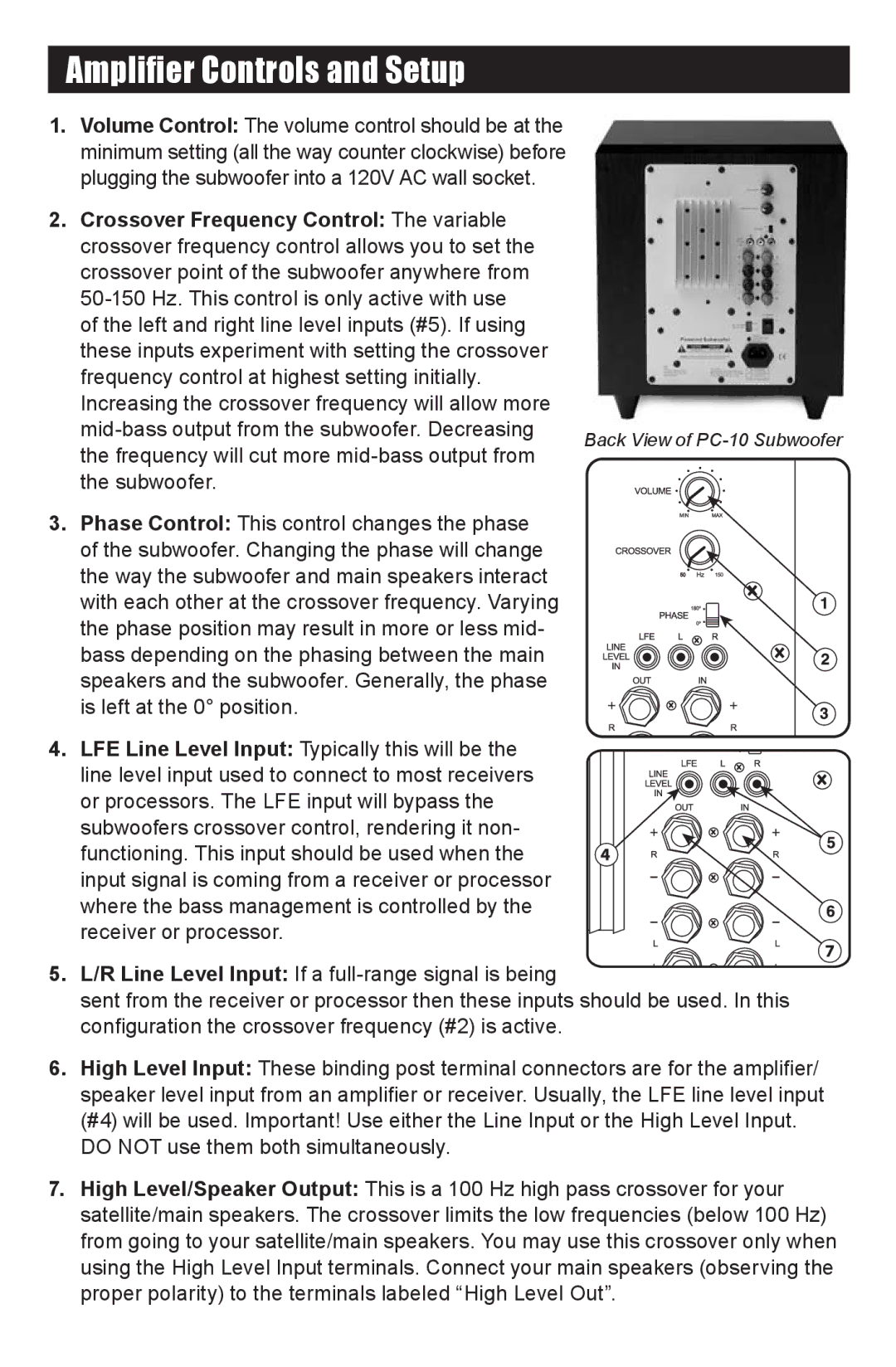PC-10 specifications
The RBH Sound PC-10 is a remarkable addition to the world of home audio, designed to deliver an exceptional listening experience for audiophiles and casual listeners alike. Its compact, elegant design makes it a versatile option for various home entertainment setups while ensuring that the performance remains uncompromised.One of the standout features of the PC-10 is its high-performance, proprietary drivers. These drivers are engineered to provide a balanced and accurate sound reproduction across a broad range of frequencies. The woofer delivers deep, punchy bass, while the tweeter excels in handling the higher frequencies with clarity and detail. The outcome is a rich sonic signature that brings music and movies to life, immersing the listener in a truly engaging audio environment.
The PC-10 also integrates advanced crossover technology, which optimally directs frequencies to the appropriate drivers. This results in seamless transitions between the low, mid, and high-range sounds, minimizing distortion and enhancing the overall audio performance. The well-thought-out design ensures that the speaker delivers an expansive soundstage, making it feel as though the performers are right there in the room.
Another significant characteristic of the RBH Sound PC-10 is its robust cabinet construction. Built with high-quality materials, the enclosure is designed to minimize vibrations and resonance, allowing for cleaner sound reproduction. The cabinet's design is not only functional but also aesthetically pleasing, available in various finishes that can complement any home décor.
Versatility is key with the PC-10; it can be utilized in a variety of configurations, whether as part of a surround sound system, a standalone speaker for music playback, or integrated into a home theater setup. Its size allows it to fit comfortably on shelves or stands without sacrificing performance or requiring excessive space.
Furthermore, RBH Sound has prioritized user experience, making the PC-10 speaker relatively easy to set up and integrate with different systems. With user-friendly connections and compatibility with many audio sources, it offers a hassle-free experience for users, making it accessible for both seasoned audiophiles and newcomers.
In conclusion, the RBH Sound PC-10 stands out as a well-designed speaker that delivers high-quality sound performance. With its advanced driver technology, effective crossover design, durable construction, and aesthetic appeal, it serves as an excellent choice for anyone looking to enhance their audio experience at home. Whether for music, movies, or gaming, the PC-10 aims to satisfy discerning listeners seeking quality sound in a compact package.

